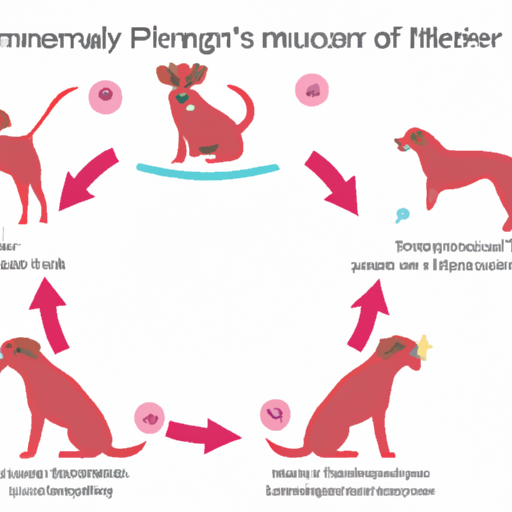Understanding Canine Reproductive Cycles
You know your furry friend like the back of your hand. You’ve been there for their first walk, their first fetch, and every significant moment in between. But when your female dog starts bleeding, you might find yourself wracking your brain for answers.
In dogs, bleeding is a normal part of the reproductive cycle. This cycle, often referred to as the “Heat Cycle,” occurs about twice a year for most breeds. During this time, your dog may bleed for anywhere from 10 to 28 days, though the average is typically 14 days.
Recognizing The Stages of The Heat Cycle
Your dog’s heat cycle consists of four stages:
- Proestrus: This is the beginning of the heat cycle when your dog starts to bleed. It typically lasts for about 9-10 days, but can vary.
- Estrus: The bleeding slows down and becomes lighter in color. This is the fertile stage where your dog can become pregnant. It lasts approximately 9 days.
- Diestrus: This stage lasts about 60 days. All outward signs of heat are gone, but if your dog was impregnated during the estrus stage, this is when she will carry her pups.
- Anestrus: This is the resting stage before the cycle starts over. It lasts about 15 weeks.
Managing Your Dog’s Bleeding
Managing your dog’s bleeding might seem daunting, but by taking a few practical steps, you can help keep your dog comfortable—and your home clean.
- Doggy Diapers: These specially designed products fit around your dog’s backside and can help catch any discharge.
- Cleaning Products: Be sure to have pet-friendly cleaning products on hand for any messes that might occur.
- Comfortable Bedding: Providing your dog with comfortable, easily washable bedding can help them feel secure during this time.
Health Concerns Related to Bleeding
While bleeding is a normal part of your dog’s reproductive cycle, excessive bleeding or bleeding outside of the heat cycle can be a cause for concern. Conditions like Pyometra, a severe uterine infection, and other health issues can cause abnormal bleeding. If you notice anything unusual about your dog’s bleeding, it’s best to consult with your vet immediately.
| Potential Symptoms | Possible Causes |
|---|---|
| Excessive bleeding | Uterine infection, trauma |
| Bleeding outside of heat cycle | Hormonal imbalance, infection, tumor |
Frequently Asked Questions
Q: How long does a dog bleed after giving birth?
A: After giving birth, a dog may bleed for up to six weeks.
Q: Can I walk my dog while she is bleeding?
A: Yes, but it’s best to keep walks short and avoid dog parks or other areas with dogs.
Q: How can I help my dog feel more comfortable while she’s in heat?
A: Providing a safe, comfortable space and using products like doggy diapers can help your dog feel more comfortable.
Q: What are signs that my dog’s bleeding is not normal?
A: If your dog is bleeding excessively, seems unwell, or is bleeding outside of her heat cycle, it’s best to consult with a vet.
Remember, you’re your dog’s best advocate. Stay observant, informed, and compassionate, and you’ll navigate this aspect of canine care with ease.



